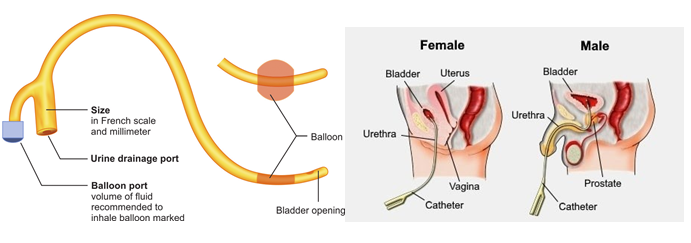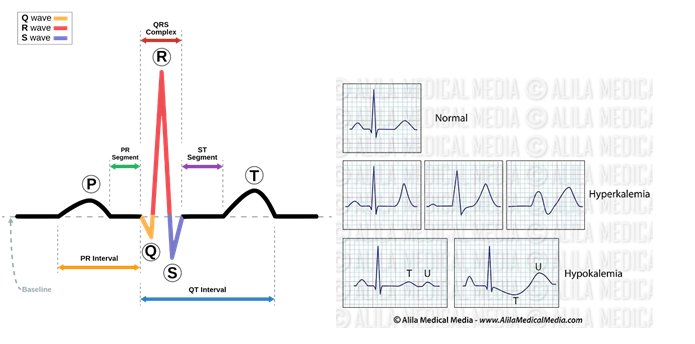A 98-year-old patient with benign prostatic hyperplasia has a markedly distended bladder and is agitated and confused. All the following orders are received from the emergency department health care provider. Which order should the nurse act on first?
Schedule for IVP.
Draw blood for blood urea nitrogen (BUN) and creatinine.
Insert 16 French retention catheter.
Administer lorazepam (Ativan) 0.5 mg.
The Correct Answer is C
The nurse should act on the order to insert a 16 French retention catheter first. The patient's markedly distended bladder and agitated and confused state suggest acute urinary retention, which can be relieved by inserting a catheter to drain the urine. This is a priority intervention as urinary retention can lead to serious complications such as bladder rupture, hydronephrosis, and renal failure. Once the catheter is inserted and the patient's bladder is drained, the healthcare provider can order further tests such as an IVP or blood tests to assess renal function. The order for lorazepam can be addressed after the catheter is inserted and the patient's urinary retention is addressed.
Nursing Test Bank
Naxlex Comprehensive Predictor Exams
Related Questions
Correct Answer is A
Explanation
The nurse will include the instruction "Offer the client the commode or urinal every 2 hours" in the teaching plan for the client's family. This approach is known as timed voiding and can help the client re-establish a regular pattern of urination. Option "a" promotes frequent voiding, which helps
prevent accidents and promotes bladder health. Option "b" is not a recommended approach and can lead to dehydration, urinary tract infections, and other complications. Option "c" is also not recommended since holding urine for extended periods can lead to bladder distention and increase the risk of urinary tract infections. Option "d" is also not recommended since catheterization should only be considered in specific cases where other options have failed or are not feasible.
Correct Answer is A
Explanation
Electrocardiographic (ECG) changes and dysrhythmias related to hypokalemia are the main reasons for initiating cardiac monitoring in patients with diabetic ketoacidosis. In diabetic ketoacidosis, insulin deficiency causes the body to break down fat for energy, leading to the production of ketones and resulting in metabolic acidosis. In addition, glucose and potassium are lost in the urine due to osmotic diuresis. Hypokalemia can cause ECG changes and dysrhythmias, which can be life-threatening.
Hypokalemia is a common complication of DKA and can lead to ECG changes such as ST-segment depression, T-wave inversion, and U waves².
Hypovolemic shock related to osmotic diuresis is an important consideration in the management of diabetic ketoacidosis, but it is not the primary reason for initiating cardiac monitoring.
Cardiovascular collapse resulting from the effects of hyperglycemia is not a common complication of diabetic ketoacidosis, and it is not the primary reason for initiating cardiac monitoring.
Fluid overload resulting from aggressive fluid replacement is a potential complication of diabetic ketoacidosis, but it is not the primary reason for initiating cardiac monitoring.
Whether you are a student looking to ace your exams or a practicing nurse seeking to enhance your expertise , our nursing education contents will empower you with the confidence and competence to make a difference in the lives of patients and become a respected leader in the healthcare field.
Visit Naxlex, invest in your future and unlock endless possibilities with our unparalleled nursing education contents today
Report Wrong Answer on the Current Question
Do you disagree with the answer? If yes, what is your expected answer? Explain.
Kindly be descriptive with the issue you are facing.



